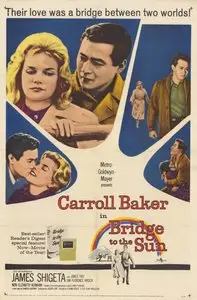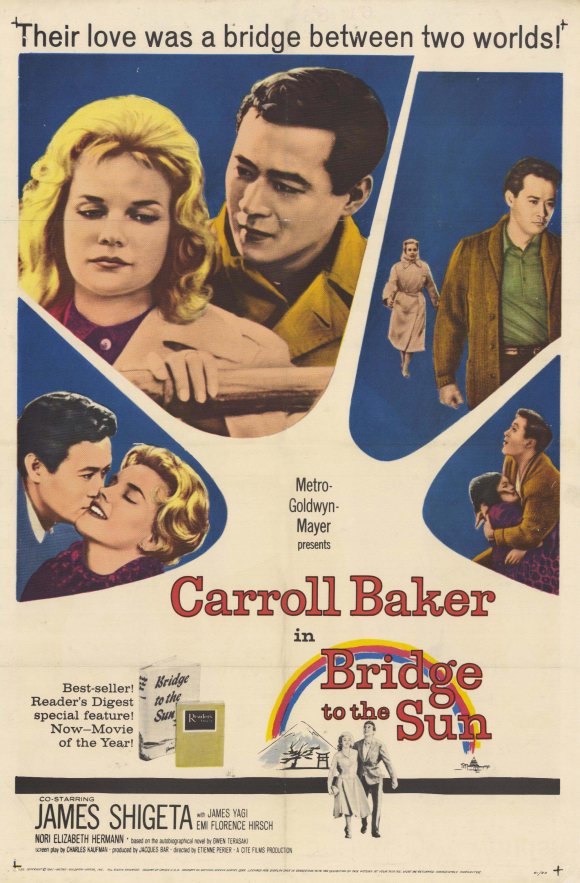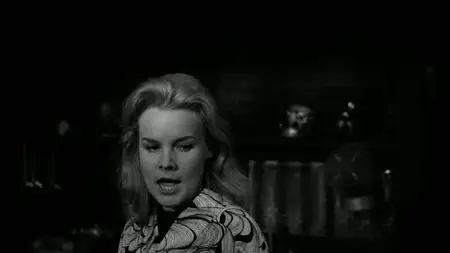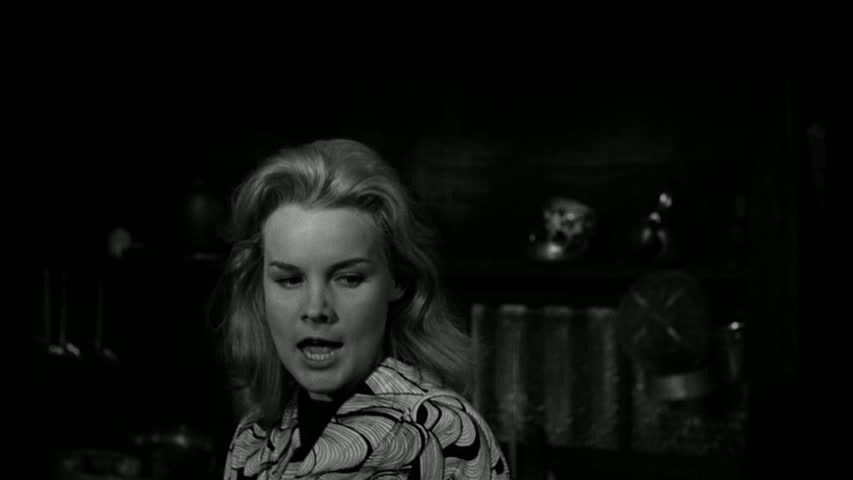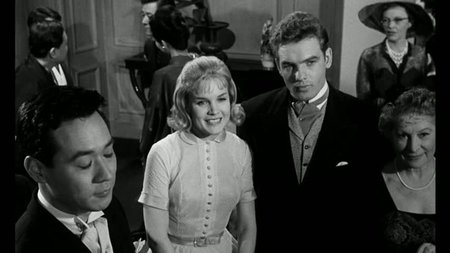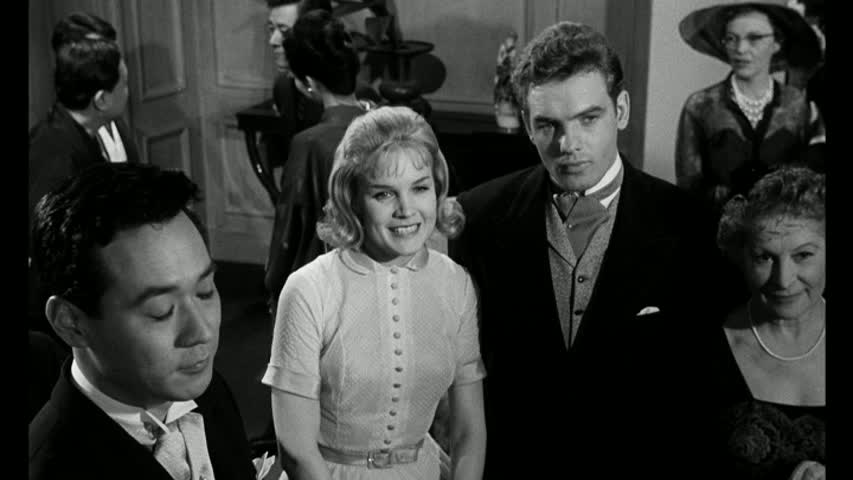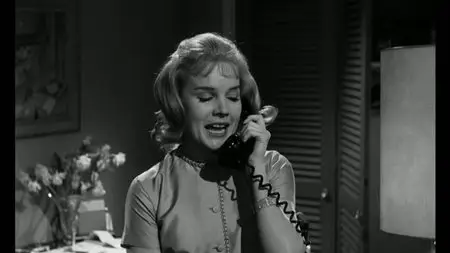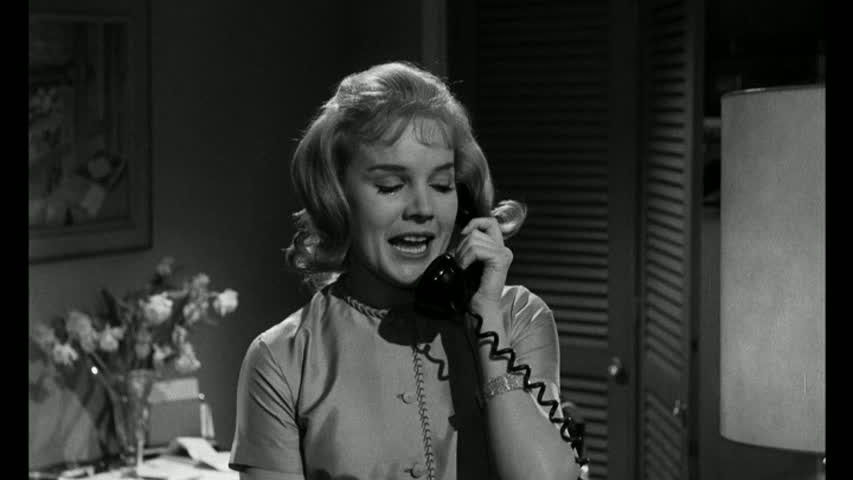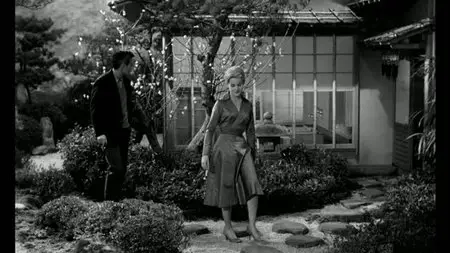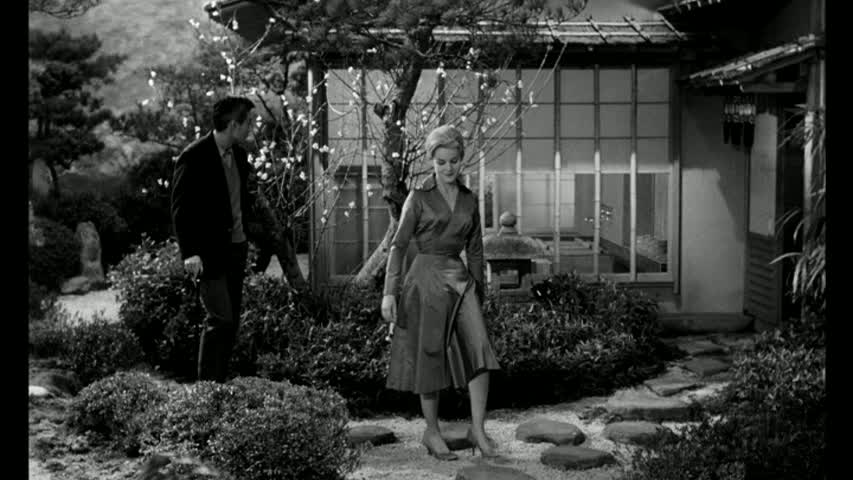Bridge to the Sun (1961)
DVD9 | VIDEO_TS | NTSC | 16:9 | 720x480 | 8900 kbps | 7.5Gb
Audio: English AC3 2.0 @ 192 Kbps
01:53:00 | France, USA | Drama, Romance, War
DVD9 | VIDEO_TS | NTSC | 16:9 | 720x480 | 8900 kbps | 7.5Gb
Audio: English AC3 2.0 @ 192 Kbps
01:53:00 | France, USA | Drama, Romance, War
Based on a true story, this compelling drama relates the difficulties of a young woman married to a Japanese diplomat during World War II, victim of suspicion and animosity from her husband's government.
Director: Etienne Perier
Cast: Carroll Baker, James Shigeta, James Yagi, Tetsuro Tanba, Yoko Takahashi, Hiroshi Tomono, Yoshiko Hiromura, Sean Garrison, Ruth Masters, Lee Payant, Nori Elisabeth Hermann, Emi Florence Hirsch
While staying in Washington, D.C., Tennessee-born Gwen Harold falls in love with and marries Japanese diplomat Hidenari Terasaki, despite the objections from her family. When the Japanese attack Pearl Harbor, Gwen, Terry and their daughter Mako are sent to Japan in exchange for American diplomats stationed there. Because of Terry’s long opposition to the war party, he is stripped of his rank and carefully watched by the Kempei-tai, the secret police. In addition, Gwen is torn between allegiance to her native country and affection for her new home, and is treated with hostility by the Japanese. When Japan eventually surrenders, Terry is appointed to act as a liaison between Emperor Hirohito and General MacArthur, but the war years have taken a toll on Terry’s health. To spare his wife and child, Terry insists they return to the U.S., however, where he will join them later. Gwen has learned of her husband’s illness and is torn between staying with him or respecting his wishes.
As Hollywood became more open to adult subject matter in the '60s, MGM tackled Bridge to the Sun (1961), a sensitive tale of interracial marriage and the problems faced by a couple caught between conflicting cultures. Filmed in 1961, the movie was one of the first films to deal with the marriage between an Asian man (James Shigeta) and a Western woman (Carroll Baker). Although a flop on its initial release, the film has gained a devoted following over the years and offers a rare view of life in Japan during World War II.
Gwen Terasaki's autobiography – depicting the events of her marriage to Japanese diplomat Hidenari Terasaki, who opposed his country's entry into World War II – became a best seller in 1957. After a whirlwind courtship in the '30s, the Terasakis had moved to his native land, returning to the U.S. in 1941 as he attempted to negotiate a peaceful settlement prior to the war. During the war, she returned to Japan when he was deported. There she was often treated as one of the enemy, even by her own daughter, and the two suffered almost unendurable poverty.
The MGM project was assigned to Jacques Bar, who had done uncredited work on Federico Fellini's I Vitelloni (1953) before working on a string of international successes. He assigned the direction to the Belgian Etienne Perier. A student of Henri-George Clouzot, Robert Siodmak and Jean Cocteau, Perier had previously worked with Bar on Murder at 45 R.P.M. (1959). He would be praised by some critics for his atmospheric direction of Bridge to the Sun and his ability to bring together location footage shot in Washington, D.C., and Japan with studio work filmed in Paris.
For the film's leads, MGM insisted on actors with some name recognition in the U.S. Hawaii-born James Shigeta had first made an impression as a singer on Ted Mack's Amateur Hour , going on to a series of musical guest appearances and nightclub work. His breakthrough on screen came with Sam Fuller's The Crimson Kimono (1959), playing an Asian-American police detective investigating a murder in Los Angeles' Japanese community. Hollywood took a liking to the handsome actor, making him the first Asian leading man to be promoted as a star since Sessue Hayakawa's days in silent films. With the film capital in a period of transition, however, there were few bankable projects available to him, nor was there much likelihood of his being cast in a major role originally written for a Caucasian actor. After starring in the musical Flower Drum Song (1961), he moved into television guest shots and eventually found himself consigned to supporting roles.
Actor's Studio alumnus Carroll Baker had been groomed as the next Marilyn Monroe at , where she earned an Oscar® nomination starring in Baby Doll and joined the all-star cast of Giant (both 1956). Her rebelliousness began to cost her roles, however, including the leads in The Three Faces of Eve (1957) and Cat on a Hot Tin Roof (1958). She also had appeared in husband Jack Garfein's experimental film Something Wild (1961), whose box-office failure almost halted her career.
Bridge to the Sun didn't help Baker either. Despite a highly touted premiere in Gwen Terasaki's native Johnson City, Tennessee, it failed at the box office, with U.S. critics complaining that the intriguing premise had been treated as a dreary domestic drama. It did better in Europe, where it was nominated for Best Picture at the Venice Film Festival, and Baker was nominated for Best Actress. Although both lost, MGM at least let her keep the Givenchy gown she had bought for the occasion. Baker's career would not revive until she tried for a more provocative image with a Playboy layout (she was one of the first Hollywood leading ladies to pose for them) and the sex-charged melodrama The Carpetbaggers (1964).
~ Frank Miller
IMDb


